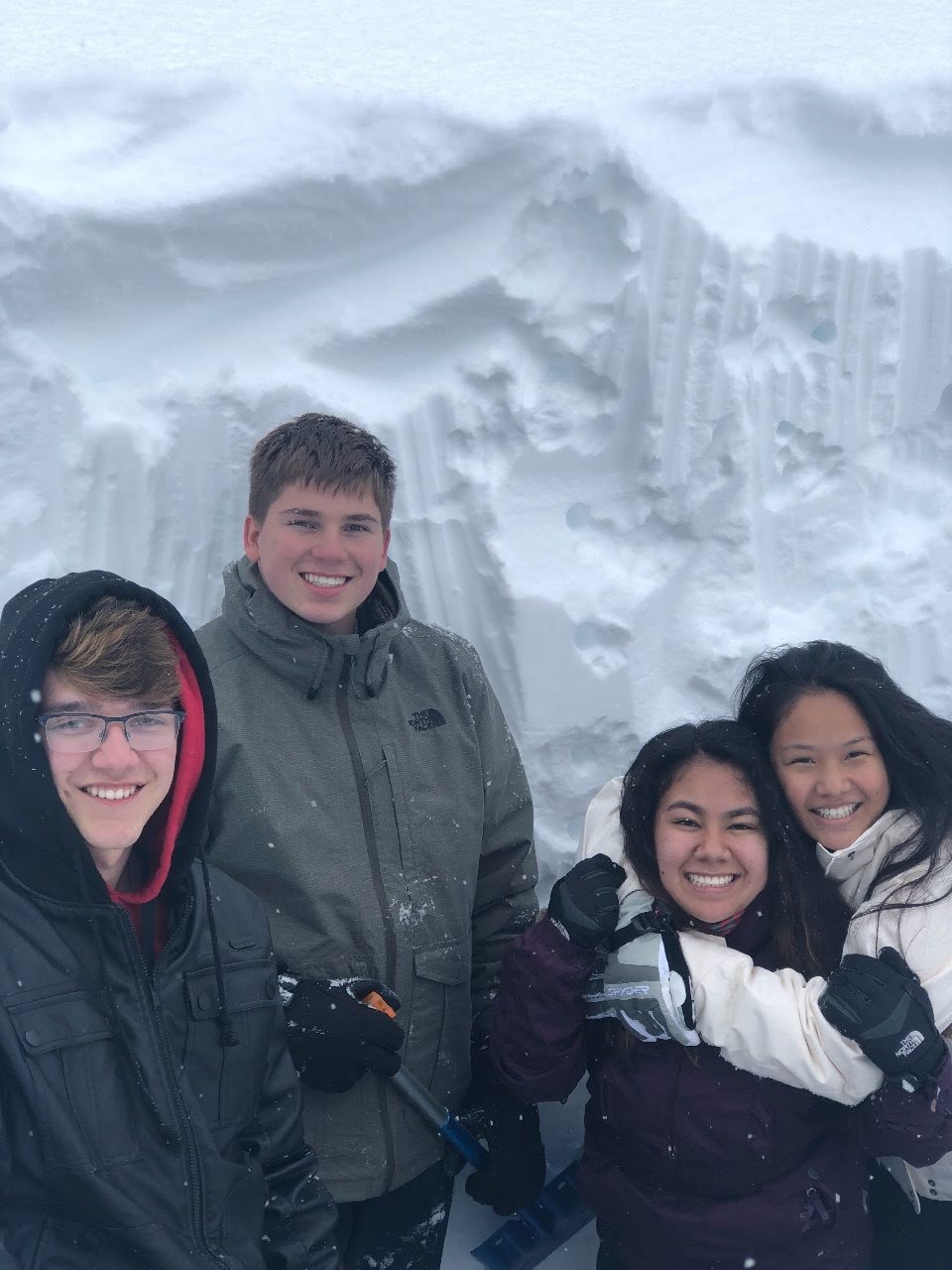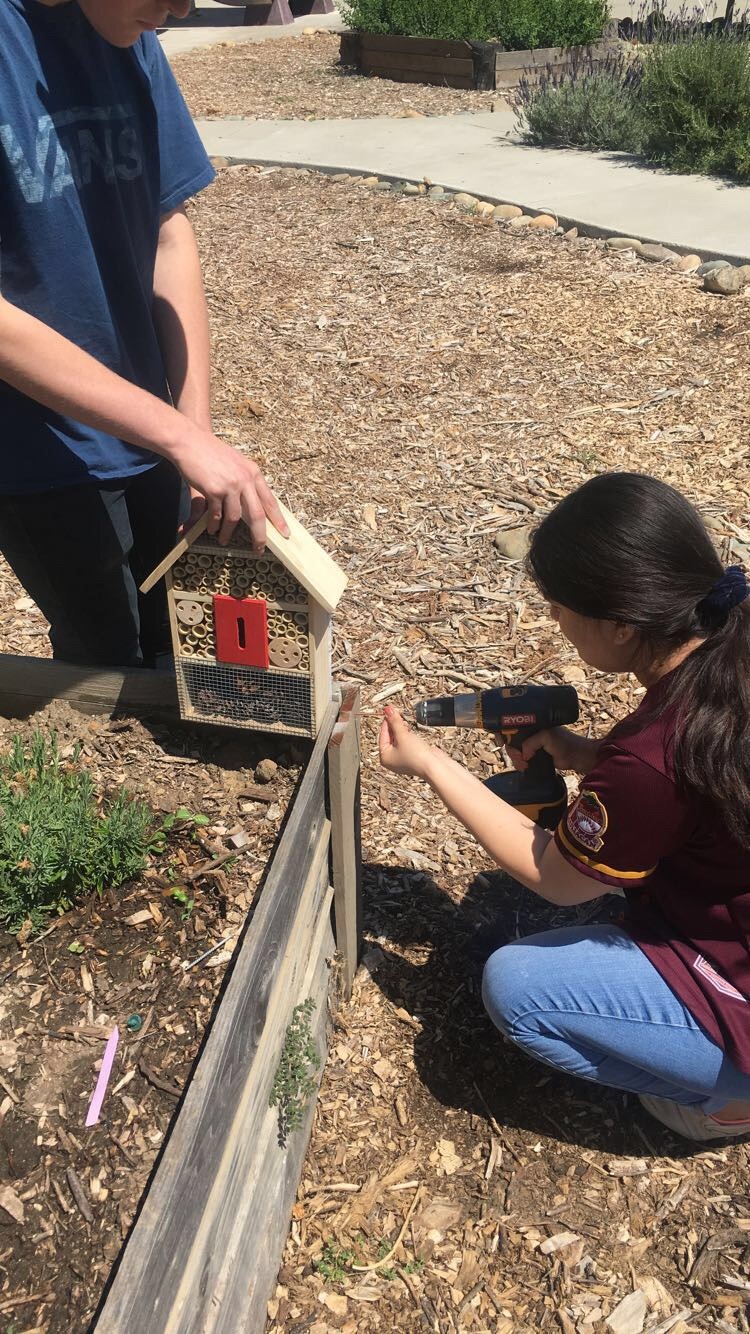
2019, Auburn, California, USA
MET Sacramento High School student Faith Smitham was concerned with all the trash she saw along one of the most popular trails in the Auburn State Recreation Area, the Canyon Creek Trail. For her Caring for Our Watersheds project, Faith organized a clean-up of the trail and creek area, including the trailhead and parking area, where much trash is found.
On Saturday, May 11, Faith and her small group of volunteers spend around 4 hours cleaning up the trail, and talking to other visitors about her project.

As a result, several hikers actually joined in their clean-up efforts, contributing to the success of the day! Faith also gathered data on the different types of trash they collected (plastic bottles were the most numerous) and planned to share this with park rangers, in case it may inform future signage, management, and the prevention of littering and pollution in this beautiful area.




 2019, Sacramento, California, USA
2019, Sacramento, California, USA
 2019, Sacramento, California, USA
2019, Sacramento, California, USA Isa identified some narrow spaces on campus that were suitable and got approval to plant, but realized he could most efficiently use the space by adding a vertical element to his pollinator garden. By trellising some common pollinator friendly plants, he not only provided habitat, but also added to the aesthetics of his school campus—and hopefully will increase the productivity of the garden as well!
Isa identified some narrow spaces on campus that were suitable and got approval to plant, but realized he could most efficiently use the space by adding a vertical element to his pollinator garden. By trellising some common pollinator friendly plants, he not only provided habitat, but also added to the aesthetics of his school campus—and hopefully will increase the productivity of the garden as well! 2019, Sacramento, California, USA
2019, Sacramento, California, USA Angel first purchased blue recycling bins for each advisory classroom. Knowing that just placing the bin in class would not necessarily increase awareness and improve recycling habits, Angel decided to engage students with an art contest. Students from each advisory would decorate bins using colored sharpie pens and the winning advisory would get a pizza party. Her contest would bring awareness to the new bins and Angel could encourage use through reminding students what they could and should recycle. Angel also plans on collecting money for the recyclable items at a recycling center, which would supplement advisory budgets for special student events.
Angel first purchased blue recycling bins for each advisory classroom. Knowing that just placing the bin in class would not necessarily increase awareness and improve recycling habits, Angel decided to engage students with an art contest. Students from each advisory would decorate bins using colored sharpie pens and the winning advisory would get a pizza party. Her contest would bring awareness to the new bins and Angel could encourage use through reminding students what they could and should recycle. Angel also plans on collecting money for the recyclable items at a recycling center, which would supplement advisory budgets for special student events. 2019, Sacramento, California, USA
2019, Sacramento, California, USA
 2019, Sacramento, California, USA
2019, Sacramento, California, USA Rachel and Barcelona wanted to replace the plastic utensils with reusable silverware and make separate napkins available to students. A main challenge to their proposed project was the fact that the school did not have a dishwasher to sanitize the silverware. However, they did not let this stop them! They developed a pilot project, using Dept. of Health standards and guidelines and rotating student volunteers to wash and sanitize the silverware generated at lunchtime at their relatively small school. Rachel and Barcelona’s well-planned project and their persistence in making a difference even within the limits of school’s infrastructure and equipment helped them take fifth in the Caring for Our Watersheds Finals.
Rachel and Barcelona wanted to replace the plastic utensils with reusable silverware and make separate napkins available to students. A main challenge to their proposed project was the fact that the school did not have a dishwasher to sanitize the silverware. However, they did not let this stop them! They developed a pilot project, using Dept. of Health standards and guidelines and rotating student volunteers to wash and sanitize the silverware generated at lunchtime at their relatively small school. Rachel and Barcelona’s well-planned project and their persistence in making a difference even within the limits of school’s infrastructure and equipment helped them take fifth in the Caring for Our Watersheds Finals.


